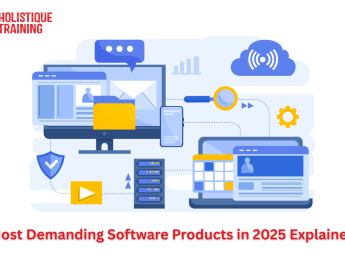- Table of Contents
- What Is Emotional Marketing?
- Why Does Emotional Marketing Resonate with Consumers?
- How Can Brands Identify the Right Emotions to Target?
- What Are the Key Strategies for Implementing Emotional Marketing?
- How Can Brands Measure the Impact of Emotional Marketing?
- What Are the Ethical Considerations in Emotional Marketing?
Introduction
Predictive analytics is revolutionizing the way organizations manage their suppliers by providing insights that allow for proactive decision-making and optimization of supplier relationships. By leveraging historical data, statistical algorithms, and machine learning techniques, businesses can identify potential risks in their supply chain before they become problematic, analyze supplier performance trends over time to identify improvement areas, and make more informed strategic sourcing decisions by predicting future demand, price fluctuations, and market conditions. This advanced approach enables companies to identify cost-saving opportunities, strengthen supplier relationships through tailored engagement strategies, forecast demand with greater accuracy, ensure compliance and sustainability practices are met, and enhance organizational agility and competitiveness. As data becomes increasingly central to business operations, predictive analytics' role in supplier management continues to grow, driving efficiency, innovation, and a competitive advantage.
What Is Emotional Marketing?
Emotional marketing is a powerful strategy that brands use to connect with their audience on a deeper, more personal level by tapping into specific emotions to drive engagement, decision-making, and loyalty. This approach goes beyond traditional features-and-benefits marketing by crafting messages that resonate emotionally with consumers, aiming to evoke feelings such as happiness, nostalgia, empathy, or even sadness. The goal is to create a memorable brand experience that strengthens consumer attachment to the brand, influencing not just one-time purchases but fostering long-term brand loyalty. Emotional marketing leverages psychological principles to understand consumer behavior and uses storytelling, visual imagery, and targeted messaging to elicit emotional responses that can significantly impact consumer choices and actions. By appealing to the heart rather than just the mind, emotional marketing seeks to establish a meaningful connection with the audience, making it a powerful tool in building brand identity and differentiation in a crowded market.
Why Does Emotional Marketing Resonate with Consumers?
Emotional marketing resonates with consumers because it taps into their fundamental desires, fears, joys, and needs, creating a more profound and memorable connection with the brand. Humans are inherently emotional beings, and our emotions significantly influence our decision-making processes, often more than logical reasoning. Emotional marketing works for several reasons:
- Emotional Connection: Consumers are more likely to remember and form a connection with advertisements and brands that evoke an emotional response. This emotional bond can increase brand loyalty and consumer retention.
- Increased Engagement: Emotional content tends to be more shareable and engaging. When consumers feel an emotional impact, they are more likely to share the experience with others, increasing the brand's reach and impact.
- Decision Making: Emotions play a critical role in decision-making. Consumers often choose products not because of their features or benefits but because of the emotional satisfaction they provide. Emotional marketing taps into these feelings to influence buying decisions.
- Brand Differentiation: In a market saturated with similar products, emotional marketing helps brands stand out by associating unique emotional experiences or stories with their products, making them more memorable than competitors.
- Drives Action: Emotional triggers can motivate consumers to take action, such as making a purchase, more effectively than purely informational content. Emotions such as fear, happiness, or a sense of belonging can be powerful motivators.
- Builds Brand Loyalty: By establishing an emotional connection, brands can foster loyalty that transcends transactional relationships. Consumers are more likely to stick with brands that they feel emotionally attached to, even in the face of price increases or competition.
Emotional marketing works because it aligns with the fundamental way humans process information and make decisions. By engaging consumers on an emotional level, brands can create meaningful interactions that lead to lasting relationships and drive consumer behavior.
How Can Brands Identify the Right Emotions to Target?
Brands can identify the right emotions to target by employing a combination of market research, customer insights, and psychological understanding of their target audience. Here’s how they can approach this process:
- Understand Your Audience: Start with a deep understanding of your target audience's demographics, psychographics, and behavioral patterns. Knowing their values, interests, and challenges helps tailor emotional marketing strategies that resonate personally.
- Customer Journey Mapping: Analyze the customer journey to identify emotional highs and lows. Understanding the emotions experienced at different stages of the journey can reveal opportunities to enhance positive emotions or alleviate negative ones.
- Social Listening: Monitor social media and online forums for discussions about your brand, competitors, and the industry. Social listening can uncover the emotional undertones in how people talk about their needs, frustrations, and desires related to your market.
- Sentiment Analysis: Utilize sentiment analysis tools to gauge the emotional sentiment of your audience towards certain topics, brands, or products. This can help identify prevailing emotions that can be addressed or amplified through marketing.
- Competitor Analysis: Observe how competitors and industry leaders use emotional marketing. Analyzing successful campaigns can offer insights into which emotions resonate with your target market.
- Engage with Your Audience: Direct engagement through surveys, focus groups, and customer feedback can provide qualitative insights into the emotional drivers of your audience. Ask specific questions about how they feel about certain aspects of your product or brand.
- Leverage Psychological Principles: Understanding psychological triggers and emotional responses can guide the selection of emotions to target. For example, knowing that scarcity can trigger fear of missing out (FOMO) might inform a campaign that emphasizes limited availability.
- A/B Testing: Test different emotional appeals in your marketing messages to see which resonate most with your audience. A/B testing can provide empirical data on the effectiveness of targeting specific emotions.
- Narrative Exploration: Experiment with different storylines and narratives in your content marketing to evoke a range of emotions. Stories that align with your brand values and connect with your audience's experiences can reveal effective emotional triggers.
- Cultural Considerations: Be mindful of cultural differences in emotional expression and response. What works in one cultural context may not work in another, so tailor your emotional targeting to the cultural background of your target audience.
Identifying the right emotions to target is a nuanced process that combines analytical data with empathetic engagement. Brands that successfully navigate this process can create deeply resonant emotional marketing campaigns that foster strong connections with their audience.
What Are the Key Strategies for Implementing Emotional Marketing?
reflect your audience's experiences, aspirations, or challenges. Storytelling is a powerful tool to create a memorable brand experience and foster an emotional connection.
- Consistent Brand Messaging: Ensure your brand messaging consistently conveys the emotional values and tones you want to be associated with your brand across all platforms. Consistency reinforces emotional connections and brand recognition.
- Leverage Visuals and Music: Utilize visuals, colors, and music that align with the emotions you aim to evoke. These elements can significantly enhance the emotional impact of your marketing messages.
- Personalization and Customization: Personalize your marketing efforts to address the individual needs and emotions of your audience. Customization can deepen the emotional engagement by making consumers feel uniquely seen and understood.
- Engage in Social Causes: Align your brand with social causes that resonate with your target audience's values and emotions. This not only amplifies the emotional resonance but also demonstrates your brand's commitment to broader social issues.
- Customer Feedback Loop: Provide a system to gather and analyze customer feedback regularly. Understanding how your audience reacts emotionally to your marketing efforts can guide adjustments and improve effectiveness.
- Empathy in Customer Service: Extend emotional marketing strategies into customer service by training staff to show empathy, understanding, and genuine care in every customer interaction. Positive emotional experiences with customer service can strengthen brand loyalty.
- Use of Social Proof: Incorporate testimonials, reviews, and user-generated content to create a sense of community and trust. Seeing real stories and experiences can trigger emotional responses and influence decision-making.
- Experiment and Adapt: Continuously test different emotional appeals and marketing channels to see what resonates best with your audience. Be ready to adapt your strategies based on performance data and changing audience needs.
How Can Brands Measure the Impact of Emotional Marketing?
Measuring the impact of emotional marketing involves assessing both the immediate and long-term effects on brand perception, engagement, and conversion rates. Here’s how brands can gauge the success of their emotional marketing efforts:
- Brand Sentiment Analysis: Utilize social listening tools and sentiment analysis to monitor changes in how people feel about your brand. Look for shifts in tone and emotion in mentions and discussions about your brand across social media, forums, and review sites.
- Engagement Metrics: Track engagement metrics on your marketing content, including likes, shares, comments, and time spent on content. High engagement levels, especially shares and comments that express emotional reactions, indicate successful emotional resonance.
- Conversion Rates: Measure changes in conversion rates before and after emotional marketing campaigns. An increase in conversions, sign-ups, or sales can signal that the emotional appeal has effectively motivated consumers to take action.
- Customer Feedback and Surveys: Conduct surveys and collect feedback directly from your audience to understand their emotional response to your marketing efforts. Questions can be designed to gauge how the campaign made them feel and whether it changed their perception of the brand.
- Website and Content Analytics: Analyze website traffic, bounce rates, and user behavior on pages associated with emotional marketing campaigns. Look for increased traffic, longer dwell times, and higher interaction rates as indicators of effective emotional engagement.
- Repeat Purchase Rate and Customer Loyalty: Track repeat purchase rates and loyalty program engagement over time. Emotional marketing that builds strong brand connections should lead to increased customer loyalty and repeat business.
- Net Promoter Score (NPS): Use NPS surveys to assess whether customers would recommend your brand to others, which can be a strong indicator of emotional connection and satisfaction with the brand.
- Brand Awareness: Measure brand awareness through surveys, brand search volume, and unsolicited social media mentions. Increased awareness, especially with positive emotional associations, suggests successful emotional marketing.
- Return on Investment (ROI): Ultimately, calculate the ROI of emotional marketing campaigns by comparing the cost of the campaign against the direct and indirect revenue it generated. Include long-term brand value enhancements in your calculations.
Table 1: Measuring the Impact of Emotional Marketing: Key Methods and Descriptions
Measurement Method | Description |
Brand Sentiment Analysis | Use social listening and sentiment analysis to track how perceptions of your brand change over time based on emotional responses across digital platforms. |
Engagement Metrics | Monitor likes, shares, comments, and content interaction to gauge emotional resonance; high engagement signals successful emotional impact. |
Conversion Rates | Compare conversion rates before and after campaigns to assess if emotional appeals have motivated consumer action. |
Customer Feedback and Surveys | Collect direct feedback to understand the audience's emotional responses to marketing efforts, assessing feelings and brand perception changes. |
Website and Content Analytics | Analyze website metrics for traffic changes, engagement rates, and user behavior on campaign-related pages to identify effective emotional engagement. |
Repeat Purchase Rate and Customer Loyalty | Track loyalty indicators over time; strong brand connections fostered by emotional marketing lead to increased loyalty and repeat business. |
Net Promoter Score (NPS) | Utilize NPS surveys to determine the likelihood of recommendations to others as an indicator of emotional satisfaction and connection. |
Brand Awareness | Measure awareness through surveys and social mentions; increased awareness with positive emotional associations indicates successful marketing. |
Return on Investment (ROI) | Calculate campaign ROI by comparing costs to revenue generated, including long-term brand value impacts, to gauge financial success. |
Measuring the impact of emotional marketing requires a combination of qualitative and quantitative methods. By closely monitoring these metrics, brands can refine their strategies to deepen emotional connections and drive meaningful results.
What Are the Ethical Considerations in Emotional Marketing?
Ethical considerations in emotional marketing are crucial to ensure that advertising efforts respect consumer dignity and promote positive societal values. Here's an exploration of these considerations:
- Manipulation vs. Persuasion: Marketers must navigate the fine line between persuading consumers and manipulating their emotions. Ethical marketing respects the consumer's ability to make informed decisions, without exploiting vulnerabilities or insecurities.
- Authenticity: Brands should strive for authenticity in their emotional appeals. Consumers are increasingly savvy and can detect insincerity, which can backfire and harm the brand's reputation. Genuine storytelling that reflects the brand’s values fosters trust and loyalty.
- Respect for Privacy: Emotional marketing often involves personalization, which requires data about consumers' preferences and behaviors. Brands must ensure they respect privacy laws and consumer consent, using data responsibly and transparently.
- Emotional Exploitation: Brands should avoid exploiting sensitive or negative emotions such as fear, anxiety, or sadness in a way that causes distress or exploits consumer vulnerabilities. Marketing strategies should aim to uplift, empower, and positively engage consumers.
- Inclusivity and Diversity: Emotional marketing should be inclusive and reflect the diversity of the audience it aims to reach. Campaigns that stereotype, marginalize, or ignore certain groups can perpetuate biases and harm societal cohesion.
- Truthfulness: Emotional marketing campaigns must be grounded in truth, without misleading consumers about the benefits or features of a product or service. Exaggeration that plays on emotions can lead to disappointment and erode trust in the brand.
- Impact on Children: Marketers need to be especially cautious when targeting children, who are more impressionable and may not fully understand the persuasive intent of advertising. Ethical marketing to children involves clear, age-appropriate messaging and avoiding exploitation of their emotional immaturity.
- Promoting Positive Values: Brands have the power to influence societal norms and values through their marketing. Ethical emotional marketing should promote positive messages, such as kindness, inclusivity, and sustainability, contributing to the betterment of society.
- Social Responsibility: Brands should recognize their role in addressing social issues and not shy away from using emotional marketing to raise awareness and support for causes. However, this should be done with sincerity and a commitment to making a tangible difference, not just for optics.
- Monitoring and Feedback: Brands should establish mechanisms to monitor the impact of their emotional marketing campaigns and gather feedback from consumers. This helps identify potential ethical concerns and adjust strategies accordingly.
Navigating the ethical considerations in emotional marketing requires a thoughtful approach that prioritizes consumer well-being, respects societal values, and upholds the integrity of the brand. By adhering to these ethical principles, brands can build meaningful, long-lasting relationships with their audience.
Conclusion
In conclusion, procurement analytics is an essential tool that revolutionizes how organizations approach their purchasing and supplier management strategies. By leveraging data-driven insights, businesses can not only identify significant cost-saving opportunities and optimize supplier relationships but also enhance risk management and overall procurement efficiency. The implementation of procurement analytics transforms the procurement function from a traditionally transactional activity to a strategic component of the business, aligning procurement activities with broader business objectives. As companies increasingly focus on operational efficiency and strategic sourcing, procurement analytics emerges as a critical element for achieving cost savings, enhancing supplier partnerships, and supporting overall business goals. Through the strategic application of procurement analytics, organizations can navigate the complexities of the modern marketplace, drive innovation, and secure a competitive advantage.

























